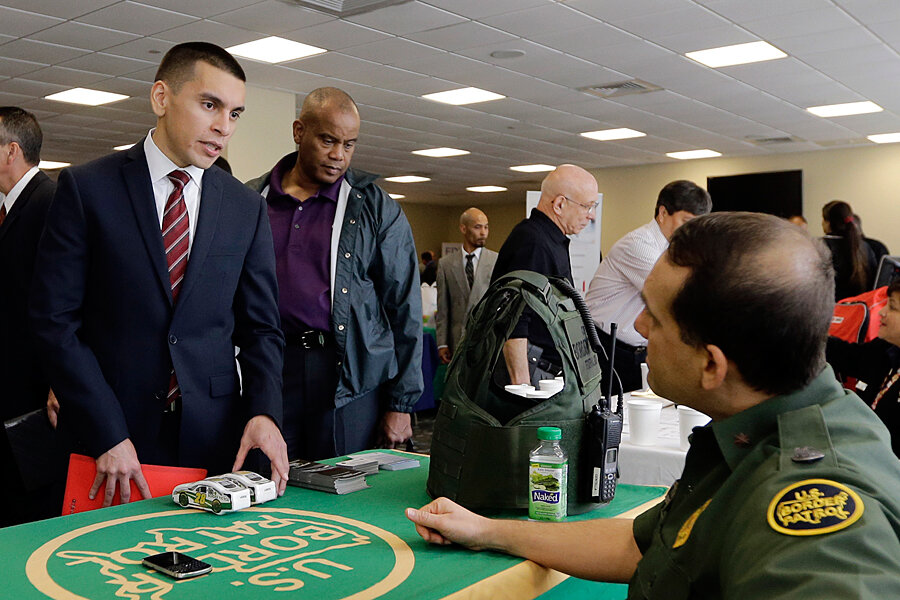New jobs hit 295,000: robust recovery, but too many Americans still on sidelines
Loading...
| Washington
Two points about the current US job market may seem contradictory but they're true. First, the long-awaited jobs recovery shows signs of real strength, and has filled much of the "employment gap" left by the Great Recession. Second, it's still too soon to say "mission accomplished."
The economy created an impressive 295,000 new jobs in February, and the official unemployment rate fell to 5.5 percent of the work force.
The other side of this labor-market coin, though, is that far too many working-age Americans are still on the sidelines, potentially wanting to work but not yet pulled back into the job hunt. (The February Labor Department report estimated that the overall work force actually shrank (by 178,000), a problem that's been visible frequently during the recession that officially ended in 2009.
The unemployment rate has been falling partly because of new jobs, but also because labor participation is weaker than can be explained just by baby boomers are aging and retiring.
These twin phenomena – the gathering steam and the still-large challenges – are explored in depth in a new Christian Science Monitor cover story, “Here come the jobs, finally”:
The job gains have actually been coming since the end of 2010 – and slower than anyone wished. But last year saw a pickup in the pace, a shift toward the better in public opinion about the economy, and forecasts of continued job creation in 2015.
Recent months have been especially strong, punctuated by gains of 423,000 jobs in November and 329,000 in December, followed by preliminary new-year numbers of 239,000 in January and 295,000 in February.
It’s enough to raise speculation that the Federal Reserve may start raising short-term interest rates from their near-zero level as early as June. Boosting rates would be a sign that the Fed sees the economy normalizing and its goals of full employment and modest inflation (about 2 percent a year) coming into view.
But an extraordinarily large number of people are still “long-term unemployed,” out of work and looking for six months or more. Click on the cover story’s first graphic, and you’ll see that during good times, fewer than 1 in 100 people in the labor force are typically long-term unemployed.
Today, it’s still way above that level, despite the major improvement since joblessness peaked in 2010.
The good news, highlighted in the cover story, is that people like Lidia Sotomayor are finding jobs. After a long struggle, she’s now a bookkeeper in Bridgeport, Conn.
But as the February job data show, lots of people are still labor-force dropouts. And the long-term unemployed are among the most likely to get discouraged.
One faction on the Fed’s policymaking committee, with an eye on that problem, sees risks in starting to raise interest rates before the job market pulls more of these people back in.
“Even though we have made great strides, the economy has not yet returned to full employment,” Charles Evans, president of the Federal Reserve Bank of Chicago, said in a speech this week.
He described the “slack” in the job market – the higher-than-normal number of people who are not in jobs or not in the job market at all – as “somewhat larger than what many others infer.” Specifically, he said the official unemployment rate may need to fall to 5 percent before the slack will be mopped up.
Pointing to inflation that’s still below the Fed’s target, he implied that the policy committee shouldn’t start pushing interest rates up before 2016.
Outside economists also have varied views, with some calling for rate hikes soon and others seeing lots of slack. Andrew Levin, an International Monetary Fund Scholar who will be joining the faculty of Dartmouth College in Hanover, N.H., estimated last month that the magnitude of employment gap that still needs to be filled remains large – about 2.7 million full-time jobs.
That estimate includes people unemployed, people who want full-time work but only have part-time jobs, and labor-force dropouts who should be pulled back in by a strengthening jobs climate.






